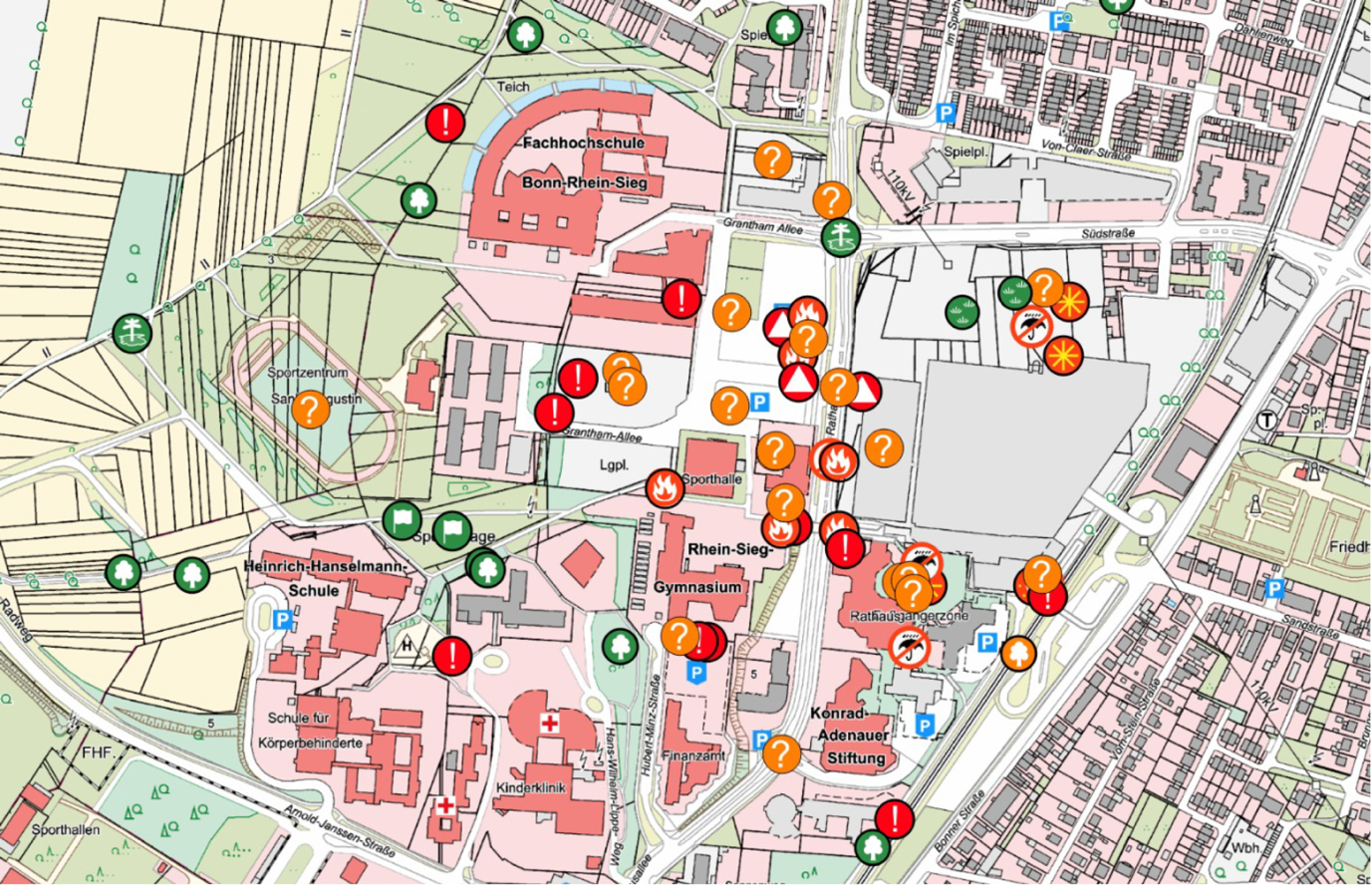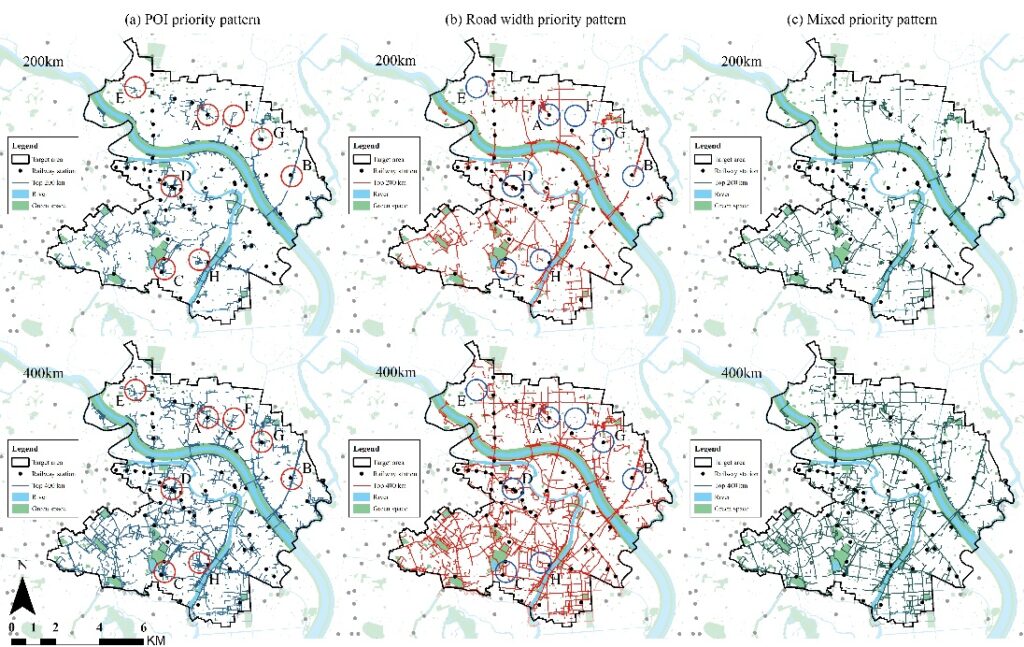City Know-hows

Citizen science projects can form the basis for sustainable and inclusive urban development in accordance with SDG 11. Citizens, researchers and city authorities work together to explore the city and implement urban planning that meets the needs of all those involved in a city.
Share
Target audience
Urban planners, researchers, city administration and citizen scientists.
The problem
The SDG 11 (sustainable cities) strives for participatory urban development that enhances citizens’ quality of life and well-being. This demand requires new processes in urban planning that take into account and realize the well-being and experience of the city’s residents. Inclusive urban development must consider the needs of all stakeholders in the city, including its diverse community.
What we did and why
Together with citizens, the city administration and local research institutions, we have developed an online WebGIS based crowdmapping tool for the German city of Sankt Augustin using a citizen science approach. With the help of this tool, the citizens of the city can map grievances and sustainability deficits in the city. These maps form the basis for a joint planning process for the city with the participation of citizens. Thus, aspects of subjective well-being and subjective evaluation by the city’s citizens in particular can be taken into account, which often are not considered in top-down planning. In this way, SDG 11 can be implemented at local level and urban development implementation measures can be created that meet the needs of citizens.
Our study’s contribution
Our study shows how the needs and subjective well-being of a city’s citizens can be taken into account in urban planning. We provide an online tool that allows all citizens of a city to participate in urban development and address sustainability deficits.
Impacts for city policy and practice
Cities and researchers who are concerned with sustainable urban development can use our methods to get a better understanding of both sustainable deficits of a city and the needs of the citizens. The interaction between citizens, administration and science allows for a targeted and comprehensive analysis of the urban environment and planning that is tailored to the needs of the urban community.
Further information
Full research article:
Inclusive urban planning: leveraging citizen science for community well-being by Johannes Klement, Andreas Rienow, Christian Daniel, Wiltrud Terlau.
Related posts

A case study in Tokyo reveals how road width, green spaces, and local amenities influence joggers’ route selection, drawn from extensive data analysis. These insights hold significant implications for urban planning strategies, advocating for city designs that prioritize exercise and outdoor activities.

Our study introduces and reviews how the built environment and its relation to population health are assessed in the literature. We did this by identifying methodological shortcomings and research potentials that need to be addressed jointly. Our assessment aims to undertake multiple health issues in an integrated manner, and identify priorities within the city whereby health is a primary goal.

This study contributes to the broader discourse on urban design for children, offering insights into how cities can create more inclusive, engaging, and health-promoting environments. It supports and adds to existing literature, finding that the alignment of play initiatives with public health goals, and strong collaboration between local government departments are effective in supporting children’s play on the strategic level. It identifies barriers to play in policy, namely budget constraints and deprioritisation of play.